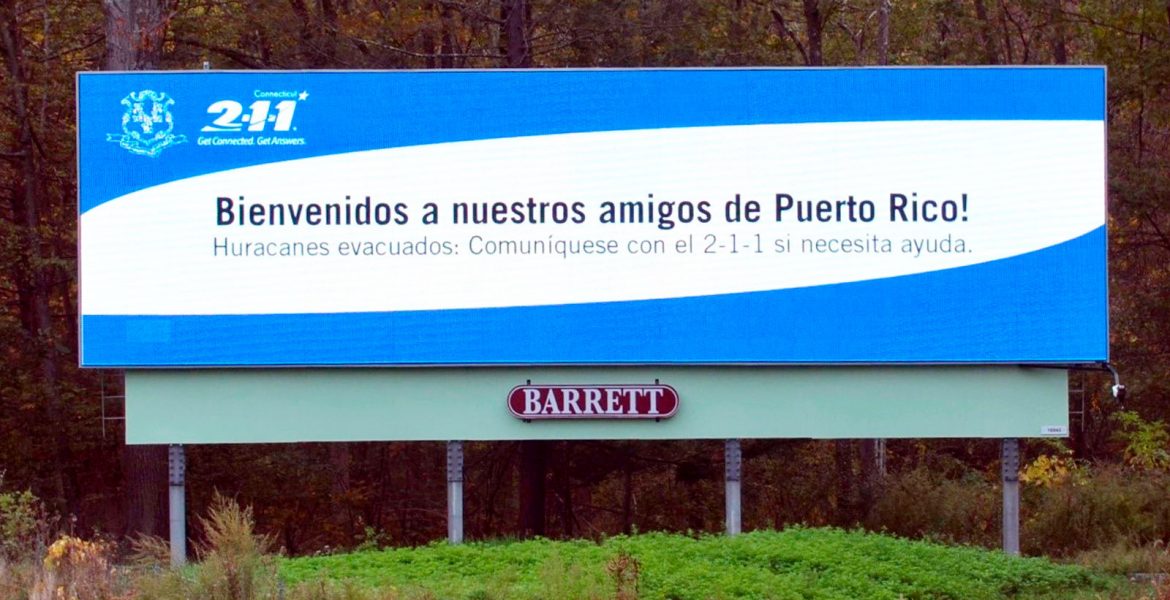How to talk with a new, mobile audience, in two languages, in a hurry?
Scott DeVico at Connecticut’s emergency service agency faced a tough communications challenge, with time pressure.
How could his State reach newly arrived Puerto Ricans evacuating their storm-ravaged island, in two languages?
Billboards.
“We are currently leading an effort to assist evacuees coming to the state from Puerto Rico as a result of Hurricane Maria. We are trying to get the word out that they should call 2-1-1 for any resources they may need when they come into the state,” said DeVico of Connecticut’s Department of Emergency Services and Public Protection.
Donated digital billboards — in English and Spanish — went up at Bradley International Airport (Hartford) and statewide on signs operated by Barrett Outdoor Communications. Lamar Advertising Company, and OUTFRONT Media.
This quick collaboration in Connecticut is part of a broader trend. As other media fragment, governments large and small are turning to billboards to communicate with the public.
In Las Vegas, local police and the FBI sought the public’s help to learn the motive of the shooter who killed 58 concert goers October 1.
 The FBI began using digital (electronic) billboards 10 years ago to help find fugitives. Since then, the FBI has resolved 58 cases based directly on tips prompted by billboard publicity.
The FBI began using digital (electronic) billboards 10 years ago to help find fugitives. Since then, the FBI has resolved 58 cases based directly on tips prompted by billboard publicity.
After hurricanes hit Texas, Florida, and Puerto Rico, the Federal Emergency Management Agency (FEMA) featured its toll-free number and website on digital billboards.
“Digital technology enables quick delivery of emergency messages via high-tech billboards,” says a case study on FEMA’s website.

In Georgia, state agencies use Twitter to send localized emergency messages to digital billboards.
 States use federal grants to promote safe driving via billboards featuring some of the best creative in the medium. At the 2017 OBIE Awards for creative excellence, Colorado’s Department of Transportation was honored in multiple categories for safety messages (buckle up, don’t drive high).
States use federal grants to promote safe driving via billboards featuring some of the best creative in the medium. At the 2017 OBIE Awards for creative excellence, Colorado’s Department of Transportation was honored in multiple categories for safety messages (buckle up, don’t drive high).
 In Wisconsin, the City of Janesville has used digital billboards to help find runaways, missing persons, and fugitives, and for emergency notifications.
In Wisconsin, the City of Janesville has used digital billboards to help find runaways, missing persons, and fugitives, and for emergency notifications.
Janesville’s former Police Chief Neil Mahan, writing in The Police Chief magazine, said messages are posted quickly, “in minutes in some cases,” including after business hours.
Government’s reliance on digital billboards reflects the evolution of media.
The FBI’s Michael P. Kortan says his agency has “evolved from using magazines and newspapers, to television, to the Internet, and now to the use of social media and digital billboards.”

